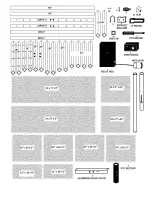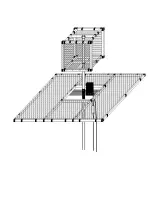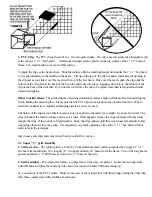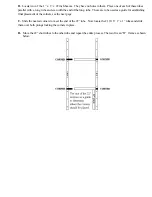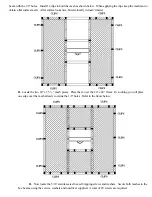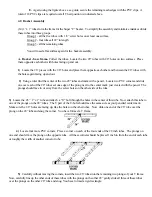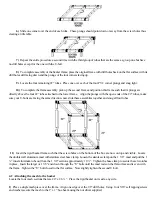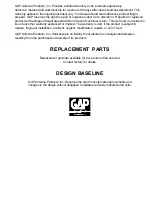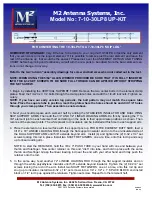
Super “C”
Introduction
1-1
Congratulations on your purchase of the GAP Super “C” Antenna. You will shortly experience the ultimate in low-
profile antenna technology. Your GAP antenna has been designed and manufactured to provide superior performance and
trouble-free operation.
GAP technology produces highly efficient, wide band and very low loss performance. Excessive antenna loss is not used to
produce wide bandwidth performance. This manual is organized to minimize the time necessary to assemble and install your
Super “C” vertical. No special tools are necessary. It is recommended that you follow the instructions step by step using
the figures only as a guide. Please read the text.
Before proceeding any further take the time to match up all the parts depicted on your parts list with the actual parts
received in your box. If ANYTHING is missing contact GAP Antenna Products, Inc to arrange for a replacement.
The use of an antenna tuner is not required. Tuners will not improve the performance of the Super “C”, however, they may
permit a solid state transmitter to maintain full output power. If VSWR is less than 2:1; using a tuner is permitted. Never
run more than 200 watts PEP or 100 watts continuous duty cycle.
Site Safety
2-1
Ideally, it is best to locate the Super “C” in a clear area away from buildings, metal fences, sheds etc. As a practical
matter, many amateurs must compromise in locating their antennas. Unlike all linear antennas, the Super “C” is virtually
independent of nearby metal objects in so far as detuning of the antenna is concerned. However, it is not wise to place a
Super “C” next to a large metal surface such as the side of an aluminum sided house and expect it to radiate through the
building.
Since the antenna can be placed almost anywhere one must carefully consider that others might be able to touch the
antenna. Installing something to prevent direct access is very important. For example, a snow fence, or similar wood
structure would provide safety by restricting access. If touched while in operation a severe burn or worse could result.
RESTRICT ALL ACCESS TO THE ANTENNA
It is acceptable to cover the antenna with a thin plastic cover. Fiberglass screening supported by non conductive corner
masts will also work. Restricting human and animal access is very important and should be the prime consideration.
To determine a proper RF safety plan treat the antenna as you would a halfwave dipole.
Should you elect to place the antenna on your roof, porch roof, or main roof, assemble and test the Super “C” on the
ground first. It is easier to locate and correct assembly problems while on the ground. After determining the antenna is
working properly you can paint your antenna with a non conductive paint to reduce it’s visibility.
The stressed aluminum screening utilized in the design of the Super “C” can yield sharp edges. Please take whatever
precautions are necessary to ensure your safety. Wearing a pair of gloves when working with the aluminum mesh would be
a good idea.



